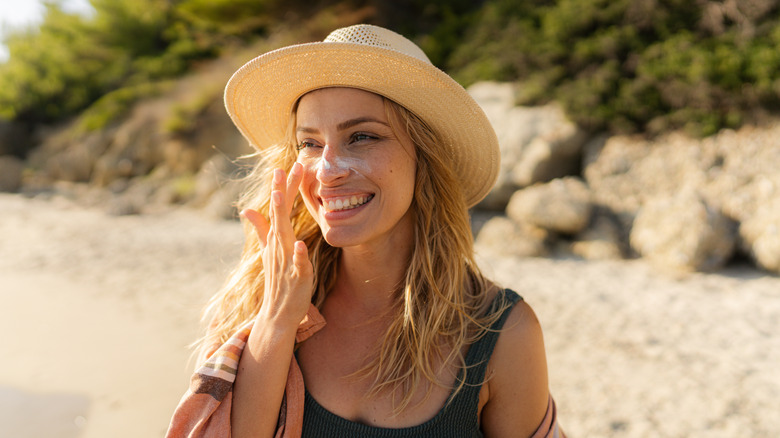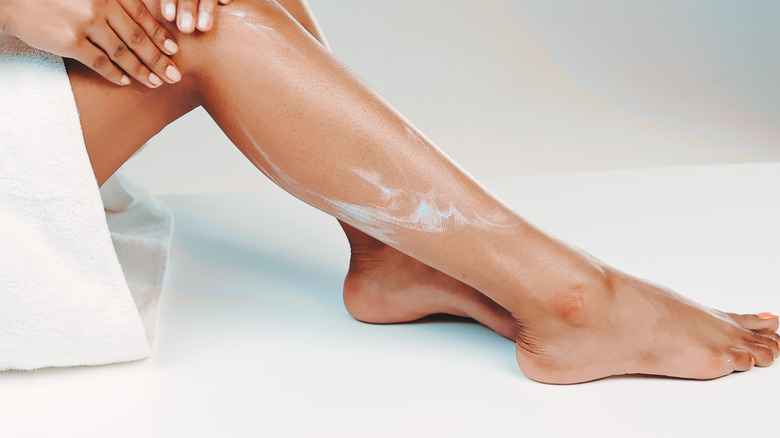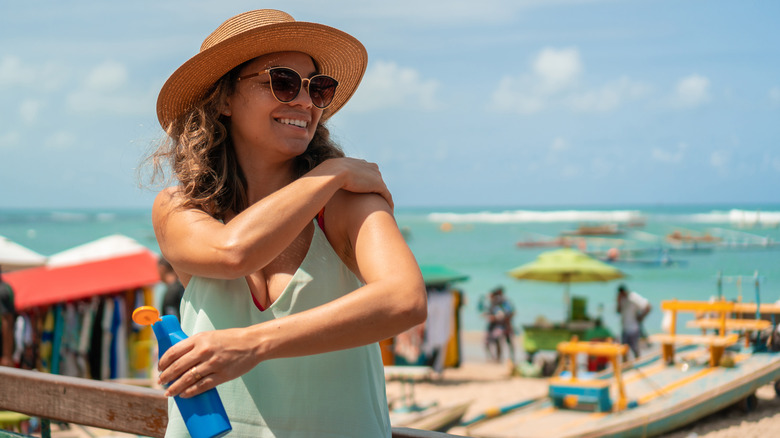The Clever Sunscreen Hack That Means You'll Never Miss A Spot
Sunscreen is to spending time outdoors as drinking enough water is to a well-rounded diet. You could feasibly opt to go without, but the long-term ramifications will start to pile up the longer you do. Even if you aren't prone to burning, not wearing sunscreen — just like skimping on your daily water intake — puts your body at risk internally and externally over time.
A high-quality SPF protects the skin from harmful UV rays, reducing the risk of serious health concerns, like skin cancer, and cosmetic ones, like wrinkles, fine lines, and sunspots, making it an essential form of protection for all skin types. This means that buying the right sunscreen is incredibly important. Still, even the best-intentioned applications can sometimes miss the mark.
Despite how straightforward it might seem, it's all too easy to incorrectly (or insufficiently) apply sunscreen, putting yourself in danger of too much sun exposure. But a clever hack posed by the Skin Cancer Foundation promises to fix this common sunscreen snafu, giving new meaning to the phrase "less is more."
The birthday suit sunscreen hack
Picture it: you're spending the day at the pool, park, or some other sun-soaked locale. Once you arrive, you diligently take out your Coppertone and start lathering up the exposed skin around your bathing suit, shorts, sleeves, etc. While the right intention is certainly there, you might not be protecting yourself as well as you think.
As clothing shifts on the body throughout the day, unprotected slivers of skin that were once covered are put at risk of direct sun exposure. Thus, the Skin Cancer Foundation advises that it's best to apply sunscreen in the nude, which means applying your SPF before you step out of the house for the day.
Moreover, it's equally important to use sunscreen on any part of the body that would be exposed to the sun (yes, even if you plan on enjoying the sunshine from the shade). This includes easy-to-miss areas like part lines on the scalp, the back of the neck, ears, and feet. Using a mirror — or someone else's helping hand — while applying your SPF pre-departure can help ensure you don't miss any spots and that your skin is as protected as possible.
Make sure you're using the right sunscreen
The type of sun protection you use matters, too. SPF, or Sun Protection Factor, indicates how long it would take the sun's rays to burn your skin. For example, SPF 30 sunscreen would protect your skin from UV rays 30 times longer than if you went without. And although this is undoubtedly important, it's not the only thing you should look for in sun protection.
The three most important letters to look for on your sunscreen bottle are UVA and UVB, which refer to both types of cancer-causing rays emitted by the sun. While UVAs are more likely to cause skin aging and UVBs, skin burning, both can cause cellular damage to all skin types. Only broad-spectrum sunscreens protect against UVA and UVB rays, which is why the Skin Cancer Foundation highly recommends these products.
Applying a broad-spectrum, high-SPF (ideally nothing below SPF 30) while undressed can help give you a solid base layer of protection. Reapplication every two hours or after intense sweating or water exposure will extend your protection throughout the day so that you can enjoy your time in the sunshine without damaging your skin. Now, your sun protection strategy can be sounder than ever.


